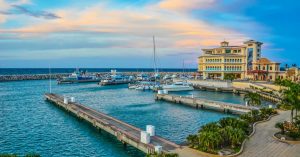Norse pagan holidays, also known as the Norse calendar or Heathen holidays, are a fascinating aspect of ancient Norse culture. These holidays were an integral part of the Norse religious practices and were celebrated with great fervor and reverence. In this article, we will explore the rich tapestry of Norse pagan holidays, delving into their origins, significance, and the rituals associated with them.
The Norse pagan calendar was closely tied to the cycles of nature, with each holiday marking a specific phase in the agricultural year or celestial events. These holidays were deeply rooted in the belief system of the Norse people and were dedicated to various gods and goddesses, such as Odin, Thor, Freyja, and Frigg. From the solstices and equinoxes to the harvest festivals and fertility rites, each holiday held its own unique symbolism and purpose.
Join us as we embark on a journey through the enchanting world of Norse pagan holidays, unearthing the ancient traditions and customs that have captivated generations. Discover the sacred rituals, the deep spiritual connections, and the profound meanings behind these celebrations that continue to resonate with modern practitioners of Norse paganism.
Origins of Norse Pagan Holidays
The origins of Norse pagan holidays can be traced back to ancient times when the Norse people lived in close harmony with the natural world. These holidays, also known as the Norse calendar or Heathen holidays, were deeply rooted in the agricultural cycles and celestial events that shaped the lives of the Norse people.
The Norse calendar consisted of twelve months, each named after a significant agricultural activity or natural phenomenon. It was a lunar calendar, with each month beginning on the day following the new moon. The calendar closely aligned with the changing seasons, marking the important moments in the agricultural year.
The Norse people believed that the gods and goddesses played a vital role in these natural cycles, influencing the success of crops, the fertility of livestock, and the overall well-being of the community. As a result, each Norse holiday was dedicated to a specific deity or group of deities, with rituals and offerings designed to honor and appease the gods.
These holidays represented important moments in the Norse calendar and were celebrated with great reverence. They provided an opportunity for the community to come together, express gratitude for past blessings, and seek the favor of the gods for the future. The celebrations involved various rituals, such as feasting, bonfires, processions, and religious ceremonies.
The Norse pagan holidays held deep symbolic meanings and served important purposes within the community. They provided a way for the Norse people to connect with the natural world, express their spirituality, and reinforce their cultural identity. These celebrations were not mere festive occasions, but rather profound spiritual experiences that reaffirmed the bonds between humans, gods, and nature.
By exploring the origins of Norse pagan holidays, one can gain a deeper understanding of the profound connection between the Norse people and the natural world. These celebrations were not only a reflection of their agricultural lifestyle but also a testament to their spiritual beliefs and their reverence for the gods and goddesses who shaped their world. Through the rituals and symbolism associated with these holidays, the Norse people sought to maintain harmony with nature and ensure the prosperity of their community.
Significance of Norse Pagan Holidays
Norse pagan holidays, also known as the Norse calendar or Heathen holidays, held great significance in the lives of the Norse people. These holidays were deeply rooted in the agricultural cycles and celestial events that shaped their existence.
The Norse calendar consisted of twelve months, each named after a significant agricultural activity or natural phenomenon. These names, such as Yule (midwinter) and Harvest (autumn), directly reflected the connection between the Norse people and the land they relied upon for sustenance. The timing of these holidays coincided with crucial periods in the farming cycle, which contributed to the well-being of their community.
The celebrations were dedicated to specific deities and involved rituals and offerings to honor and appease the gods. By observing these traditions, the Norse people sought to maintain harmony with nature and ensure the prosperity of their community. It was believed that pleasing the gods through these rituals would result in favorable weather, abundant crops, and a thriving community.
Moreover, the Norse pagan holidays provided an opportunity for the community to come together, express gratitude, and seek the favor of the gods. These gatherings fostered a sense of unity and strengthened social bonds within the community. During the holidays, individuals set aside their daily concerns and focused on the spiritual and communal aspects of their lives.
The celebrations held deep symbolic meanings and served important purposes within the community, reinforcing their cultural identity and spiritual beliefs. Through these rituals, the Norse people honored their ancestors, emphasized the cyclical nature of life and death, and acknowledged the power of the natural world.
Overall, Norse pagan holidays were not merely ceremonial occasions; they played a vital role in the lives of the Norse people. These celebrations allowed them to pay homage to the gods, ensure the prosperity of their community, and reinforce their cultural and spiritual values. By understanding the significance of these holidays, we gain insight into the deep connection between the Norse people, the land, and the divine forces that guided their lives.
The Norse Pagan Calendar
The Norse pagan holidays were based on a unique calendar system that reflected the agricultural cycles and celestial events important to the Norse people. This calendar consisted of twelve months, each named after a significant agricultural activity or natural phenomenon. The Norse were deeply connected to nature and believed that the rhythm of life and the changing seasons were guided by the gods.
- Þorri (January/February): This month was associated with the coldest time of the year, and offerings were made to the god Thor to ward off frost and ensure a mild spring.
- Góa (February/March): Góa marked the last part of winter and the preparation for the upcoming growing season.
- Einmánuður (March/April): This month signaled the beginning of spring, with its name meaning “lone month” as it stood between the harshness of winter and the bounty of summer.
- Harpa (April/May): Harpa marked the arrival of warmer weather and the blossoming of flowers and trees.
- Skerpla (May/June): This month celebrated the fertility of the land and animals, and offerings were made to Freyr, the god associated with farming and abundance.
- Solmanudur (June/July): Solmanudur coincided with the summer solstice, the longest day of the year, and was a time for celebrating the power of the sun.
- Heyannir (July/August): The month of Heyannir focused on the first harvests and offerings to Freya, the goddess of fertility and abundance.
- Tvímánuður (August/September): Tvímánuður marked the harvest season and the preparation for the coming winter.
- Haustmanudur (September/October): This month signaled the autumnal equinox, and it was a time for giving thanks for the bountiful harvest and preparing for the colder months ahead.
- Gormánuður (October/November): In Gormánuður, the focus shifted to the remembrance of ancestors and the preparation for the coming winter.
- Ýlir (November/December): Ýlir was a month of feasting, merriment
Solstices and Equinoxes
In addition to the monthly holidays, Norse pagan celebrations also included the observation of solstices and equinoxes. These astronomical events marked significant points in the calendar and were deeply intertwined with the Norse people’s spiritual beliefs and agricultural practices.
Solstice refers to the two points in the year when the sun reaches its highest or lowest position in the sky at noon. The winter solstice, also known as Yule, marked the shortest day and longest night of the year. It symbolized the rebirth of the sun and the gradual return of light and warmth to the land. Yule was a joyous holiday filled with feasting, drinking, and gift-giving. It celebrated the renewal of life and the hope for a prosperous year ahead.
On the other hand, the summer solstice, known as Midsummer or Litha, celebrated the longest day and shortest night of the year. It represented the peak of the sun’s power and the abundance of nature. Midsummer was a time for outdoor gatherings, bonfires, and dancing. It was believed that the bonfires would ward off evil spirits and ensure a bountiful harvest.
Equinoxes, which occurred twice a year, marked the moments when day and night were of equal length. The spring equinox, or Ostara, signaled the arrival of spring and the rebirth of nature. It symbolized the balance between light and darkness, and the emergence of new life. Ostara was a time for planting, fertility rituals, and celebrating the return of growth and vitality.
Similarly, the autumn equinox, also known as Mabon, marked the transition from summer to fall. It represented the harvest and the gratitude for the abundance of the land. Mabon was a time for community gatherings, feasting, and expressing thanks for the fruits of labor.
The solstices and equinoxes were sacred times for the Norse people, where they acknowledged the cyclical nature of life, the changing seasons, and the interconnectedness of all living things. These celestial events held great meaning and significance, serving as reminders of their deep spiritual connection with the natural world.
Harvest Festivals and Fertility Rites
Harvest festivals and fertility rites held a prominent place in Norse pagan holidays. These celebrations were centered around the cycles of the seasons and the crucial role of agriculture in the lives of the Norse people. They focused on honoring the Earth and its bountiful gifts.
**1. **Harvest Festivals:
- One of the main harvest festivals in Norse paganism was called “Haustblot,” which literally translates to “autumn sacrifice.” It typically took place around the time of the autumn equinox, when the crops were ready to be harvested.
- The purpose of the harvest festival was to show gratitude to the gods and spirits for the successful harvest and to ensure fertility and abundance for the following year.
- The celebration involved offering a portion of the harvested crops and other agricultural products as sacrifices to the gods. These offerings were also shared among the community through feasts and communal gatherings.
- During the harvest festival, people would engage in various activities such as singing songs, performing dances, and participating in friendly competitions to celebrate the abundance of the harvest.
**2. **Fertility Rites:
- Fertility rites were an integral part of Norse pagan holidays, highlighting the importance of fertility and the continuation of life.
- These rites were performed to ensure the fertility of the land, livestock, and people. They aimed to guarantee prosperous harvests, healthy animals, and healthy offspring.
- Fertility rituals often took place during the spring or early summer months when the Earth was coming back to life after the long winter.
- The rituals involved various symbolic acts, such as planting seeds, pouring libations, and celebrating the union of male and female energies through dances and ceremonies.
- The Norse people believed that by participating in these fertility rites, they would invoke the blessings of the gods and spirits, ensuring the abundance of crops and the continuation of life.
In Norse paganism, harvest festivals and fertility rites played a crucial role in the cyclical nature of life. They not only celebrated the bountiful harvests and the fertility of the land but also reinforced the interconnectedness of humans with nature. Such celebrations fostered a deep appreciation for the Earth’s gifts and the need to maintain a harmonious relationship with the natural world.
Sacred Rituals and Customs
Norse pagan holidays were rich in sacred rituals and customs that infused the celebrations with deep spiritual significance. These rituals were performed to honor the gods, seek blessings, and ensure the well-being of the community. Let’s explore some of the key rituals and customs practiced during these festive occasions.
Blót: Offering and Sacrifice
Central to Norse pagan holidays was the ritual of blót, which involved offering and sacrifice. Blót was a way for individuals and communities to establish and strengthen their bond with the gods and gain their favor. During blót, offerings such as food, drink, and valuable objects were presented to the gods on altars or in sacred spaces. Animal sacrifices were also common, with the blood and meat being seen as offerings to the gods. These acts of giving and sacrifice were believed to ensure the continued well-being and protection of the community.
Symbel: Toasting and Celebrating
Another important ritual in Norse pagan holidays was symbel, a communal feast where toasting and celebrating took place. Symbel was an opportunity for individuals to express their gratitude, share stories, and honor their ancestors and heroes. Participants would gather in a hall or around a sacred fire, raising their drinking horns filled with mead or ale. They would take turns making toasts, dedicating them to the gods, ancestors, and esteemed individuals. Symbel fostered a sense of unity and connection within the community, strengthening bonds and invoking blessings.
Seidr: Divination and Magic
Norse pagan holidays also saw the practice of seidr, a form of divination and magic. Seidr was primarily performed by volvas, female practitioners who were believed to possess the ability to communicate with the spiritual realm. These seers would enter a trance-like state to gain insight into the future, communicate with the gods, and manipulate the forces of nature. Seidr was often performed during solstice and equinox celebrations, as these were considered particularly potent times for divination and magic.
Processions and Ritual Performances
Deep Spiritual Connections
Norse pagan holidays were deeply rooted in the spiritual beliefs and practices of the Norse people. These celebrations not only marked important dates in the Norse calendar, but also served as a way to establish and maintain a profound connection with the divine and the natural world.
For the Norse, nature was seen as sacred, and they believed that every aspect of the natural world was imbued with spiritual energy. This belief formed the foundation of their deep spiritual connections. Through their celebrations, the Norse sought to honor and connect with the gods and spirits that governed different aspects of nature and life.
The solstices and equinoxes held great significance for the Norse people. These celestial events marked the changing seasons and the balance between light and darkness. The summer and winter solstices, in particular, were celebrated with great pomp and fervor. The summer solstice, or “Midsummer,” symbolized the peak of the sun’s power and was seen as a time of rebirth and renewal. On the other hand, the winter solstice, or “Yule,” represented the rebirth of the sun after the darkest period of the year. These festivals were accompanied by various rituals and traditions, including bonfires, feasting, and the exchange of gifts.
Harvest festivals, such as “Haustblot,” were another important aspect of Norse pagan holidays. These celebrations were centered around the cycles of the seasons and the vital role of agriculture in the Norse society. The harvest festival was a time of gratitude and offering to the gods and spirits for the bountiful harvest. It was believed that by showing gratitude and making offerings, the Norse ensured fertility and abundance for the coming year.
In addition to the solstices, equinoxes, and harvest festivals, the Norse people engaged in sacred rituals and customs to deepen their spiritual connections. One such ritual was “blót,” which involved offering and sacrifice to establish a bond with the gods. During blót, the Norse would make offerings of food, drink, and other items to the gods in sacred spaces, such as groves or temples. This act of offering and sacrifice was believed to create a reciprocal relationship with the divine.
Modern Practices of Norse Paganism
In recent years, there has been a resurgence of interest in Norse paganism, also known as Heathenry, as people seek to reconnect with their ancestral roots and explore alternative spiritual practices. While the ancient Norse pagan holidays were deeply rooted in the culture and beliefs of the Norse people, modern practices of Norse paganism have adapted and evolved to suit the needs and preferences of contemporary practitioners.
Blot and Sumbel: One of the central practices in modern Norse paganism is the “blot,” which is a ritual offering and sacrifice to the gods. This ritual typically involves making offerings of food, drink, or other items to establish a connection with the divine. Another important ritual is the “sumbel,” which involves the sharing of mead or other beverages among the participants, who take turns making toasts, sharing stories, and honoring the gods, ancestors, and personal deities.
Observance of Solstices and Equinoxes: Just as in ancient times, the solstices and equinoxes continue to hold great significance in modern Norse pagan practices. These points in the year mark the changing of seasons and the balance between light and darkness. Many practitioners gather during these times to perform rituals, light bonfires, and celebrate the turning of the Wheel of the Year. These celebrations not only honor the cycles of nature, but also serve as a way to connect with the gods and seek their blessings for the coming season.
Folk Festivals and Gatherings: Modern Norse pagan communities often come together to celebrate folk festivals and gatherings. These events provide opportunities for practitioners to share knowledge, connect with like-minded individuals, and participate in communal rituals and ceremonies. Some of these gatherings are organized around specific holidays, such as the celebration of the spring equinox or the harvest festival, while others are more general in nature and feature workshops, lectures, and performances related to Norse spirituality.
Personal Practices and Devotions: In addition to group rituals and communal celebrations, modern practitioners of Norse paganism also engage in personal practices and devotions. These may include daily prayers, meditation, rune readings, and the creation of personal altars or sacred spaces. Personal practices allow individuals to develop a deeper connection with the Norse gods and goddesses, as well as explore their own spirituality within the framework of Norse paganism.
Conclusion
Norse pagan holidays are deeply rooted in the spiritual beliefs and practices of the Norse people. These celebrations served as a way to establish a profound connection with the divine and the natural world. The solstices and equinoxes held great significance, symbolizing the changing seasons and the balance between light and darkness. The summer and winter solstices were celebrated with bonfires, feasting, and gift exchanges. Harvest festivals, such as “Haustblot,” focused on gratitude and offering to the gods for a bountiful harvest. Sacred rituals and customs, like “blót,” involved offering and sacrifice to establish a bond with the gods.
In recent years, there has been a resurgence of interest in Norse paganism, as people seek to reconnect with their ancestral roots and explore alternative spiritual practices. Modern practices of Norse paganism have adapted and evolved to suit the needs and preferences of contemporary practitioners. These practices include rituals like “blot” and “sumbel,” observance of solstices and equinoxes, participation in folk festivals and gatherings, and personal practices and devotions.
Overall, Norse pagan holidays provide a unique and meaningful way for individuals to connect with their heritage and embrace a spiritual path that honors the ancient traditions of the Norse people.
Frequently Asked Questions
Q: What is the significance of Norse pagan holidays in the Norse calendar?
A: Norse pagan holidays were deeply rooted in the spiritual beliefs of the Norse people, serving as a way to establish a connection with the divine and the natural world. They symbolized changing seasons, balance between light and darkness, and gratitude for the harvest.
Q: How were the summer and winter solstices celebrated in Norse pagan holidays?
A: The summer and winter solstices were celebrated with rituals and traditions such as bonfires, feasting, and gift exchanges. These festivities were a way for the Norse people to honor and celebrate the longest and shortest days of the year.
Q: What were the harvest festivals in Norse pagan holidays?
A: Harvest festivals, like “Haustblot,” were important in Norse pagan holidays. They focused on gratitude and offering to the gods for a bountiful harvest. These occasions allowed the Norse people to show their appreciation and seek blessings for future abundance.
Q: What were some of the sacred rituals and customs in Norse pagan holidays?
A: Sacred rituals like “blót” were performed in Norse pagan holidays. They involved offering and sacrifice to establish a bond with the gods. These practices were an essential part of maintaining a spiritual connection with the divine beings and seeking their guidance and favor.
Q: How has Norse paganism evolved in recent years?
A: There has been a resurgence of interest in Norse paganism, also known as Heathenry, in recent years. Modern practitioners adapt ancient practices to suit contemporary needs. They observe solstices and equinoxes, participate in folk festivals and gatherings, engage in personal practices and devotions, and incorporate rituals like “blot” and “sumbel” into their spiritual lives.



